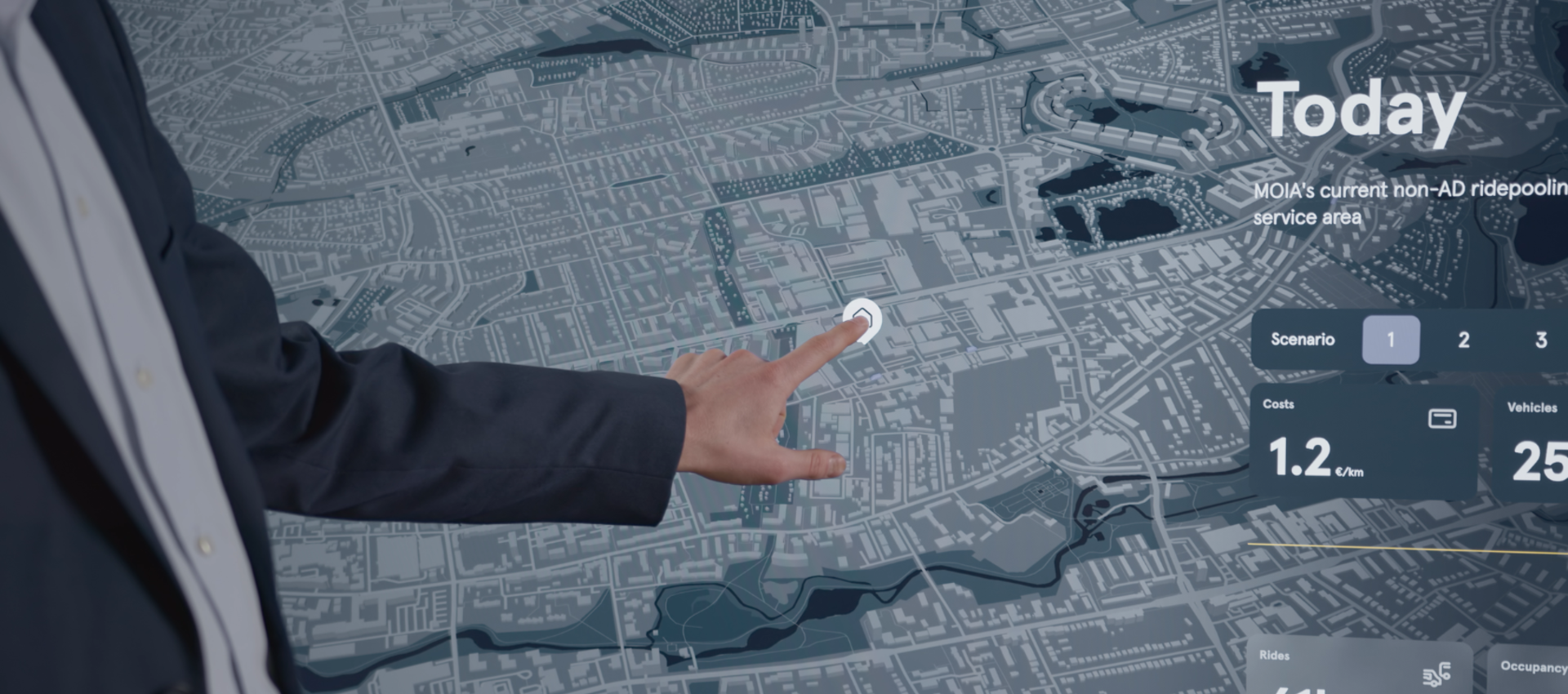Nationwide MOIA simulation on Autonomous Ridepooling
MOIA’s Mobility Consulting team conducted a comprehensive analysis to assess the impact of a nationwide autonomous ridepooling service. By leveraging mobile network data, the team calculated the scale of daily mobility across Germany: Approximately 300 million trips are taken each day. Of these, 157 million trips fall within the 1.5 to 50-kilometer range, an ideal distance for ridepooling services.
In the simulation, 12 million of these trips were assigned to an autonomous ridepooling service, corresponding to a four-percent modal share. These trips could be served by 300,000 autonomous cars, each averaging 1.7 passengers and a wait time of just ten minutes, across both rural and urban areas. The result? A highly efficient system offering consistently high service levels. Specifically, each autonomous car in the simulation could complete 40 trips per day, with an average trip length of 16 kilometers, totaling 183 million passenger kilometers daily.
What impact could a nationwide autonomous ridepooling service have?
Key findings at a glance:
- Up to 5 billion tons of CO₂ saved annually
- Improved accessibility in both urban and rural areas, without the need for new infrastructure
- Greater efficiency, reduced congestion, and new opportunities for industry and society
Through a 40-percent increase in sustainable transport capacity, for instance by replacing 10-percent of car trips, the simulation indicates that a nationwide autonomous ridepooling service could reduce CO₂ emissions by up to 5 billion tons annually. It would also help relieve congestion, lower vehicle emissions, reduce demand for parking, and support public transport networks, particularly in underserved areas. Powered entirely by electric cars, such a service would also improve air quality and reduce noise pollution.
The model also projects potential external cost savings of nearly €4 billion annually. This is thanks to reduced external costs related to environmental damage, traffic accidents, congestion, and noise, enabled by optimized routing and autonomous safety systems.

Outlook for Germany’s mobility sector
The simulation also identifies significant economic and societal benefits. Autonomous ridepooling can help address labor shortages in public transport, create new jobs in fleet operations and autonomous system management, and strengthen Germany’s leadership in sustainable mobility innovation. It would also promote greater social and economic inclusion, particularly in rural regions.
Germany’s automotive industry stands to benefit as well by tapping into new markets and advancing the shift toward digital, automated mobility.
“The analysis and simulation show that autonomous ridepooling is a scalable solution for Germany’s mobility future,” says Dr. Felix Zwick, Team Lead Mobility Consulting at MOIA. “It will not only reduce our dependence on private cars but also enhance existing public transport infrastructure, without requiring costly new investments.”
Curious what autonomous ridepooling could look like in your region? MOIA Mobility Consulting offers customized simulations using the Mobility Impact Analyzer (MIA). Read the full analysis (PDF) and discover the future of mobility today.
